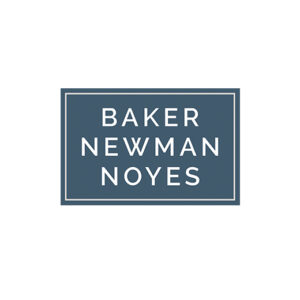Lease Accounting Changes: New Standards and ASC 842 Changes

As of January 1, 2022, new lease accounting changes and ASC 842 standards become effective for privately held businesses with a calendar year-end. This article will summarize the key changes to your financial statements from the lessee’s perspective in a lease transaction. As with many recent accounting standard changes, several adoption methods and practical expedients (i.e. shortcuts) exist. Rather than a comprehensive guide to full adoption, this piece will address some of the most common scenarios we expect organizations to encounter and ways to apply the new rules when transitioning to ASC 842.
New lease accounting changes and standards to your financial statements:
- The Balance Sheet will report a Right of Use Asset (ROUA) and corresponding Lease Liability. Think of how you used to account for capital leases under the old standards. Now, all leases (operating and finance) will be reflected as assets and liabilities on the balance sheet. ROUAs are reported as long-term assets, similar to property and equipment, and the Lease Liability will be segregated into current and long-term portions. ROUA and Lease Liability balances will decrease throughout the term of the lease until the expiration of the contract.
- The Income Statement is substantially unchanged. For operating leases, the expense is still recorded on a straight-line basis and is characterized as lease expense, as it always has. Similarly, for finance leases, the treatment of interest and depreciation expenses are nearly identical to the historical reporting for capital leases.
- Related Party Leases are included. The new standards also apply to related party leases. Such leases should be classified based on their legally enforceable terms. Special consideration should also be given to whether there are any implicit legally enforceable terms. One question that may arise relates to instances where a related party lessor is categorized as a variable interest entity. Historically, these entities typically were included in a company’s consolidated or combined financial statement, with the lessee/lessor activity eliminated in consolidation. The same principles will apply under the new standard.
- Footnotes are expanded. Additional financial statement disclosures will be required, which vary depending on the adoption methods selected. The language is designed to enable users to understand the changes in comparability (if any).
- Key performance indicators are affected. Even in the absence of any true changes in underlying financial strength, this shift from off-balance sheet presentation to capitalization of operating leases may give the appearance of diminished liquidity. It could alter various metrics used internally by your organization and impact your lender’s assessment of financial covenants.
How to evaluate and account for leases under ASC 842:
- Leases are now classified as operating or finance types as opposed to operating or capital. The classification of leases follows criteria that are somewhat similar to the old standards, but there are no more bright-line tests in the guidance and determination is more subjective. For example, previously if you leased an asset for 74% of its useful life, it was considered under this test to be an operating lease because it fell under the 75% requirement for a capital lease. Under the new standard, 74% might meet the new criteria of a finance lease.
- Accounting for existing leases has been simplified. Many will welcome the news that if you elect the basket of practical expedients, as we suspect most will, the historical lease classifications (operating vs capital) are grandfathered. If so, there is no need to reevaluate the lease when applying the new standard.
- New leases and lease modifications commencing on or after 1/1/2022. This is where the full slate of new accounting provisions will have an ongoing impact. Depending on the complexity of your leasing environment, including how many leases you need to evaluate and account for prospectively, the software may be advisable to assist in the process. If you have just a few leases and choose to do it manually, there are certain considerations that you must review in detail to properly account for the lease. Some of those include:
- Determining if a contract is or includes a lease,
- Classifying the lease as operating or finance under the new standards,
- Determining the lease term (whether to include renewal options in the term),
- Factoring in costs incurred (i.e. broker commissions) or incentives received before lease commencement,
- Discount rates, and
- Whether you can take a portfolio approach to evaluating and accounting for leases with similar characteristics (i.e., you lease 15 vehicles under similar terms).
- Calculating the ROUA and Lease Liability. As with legacy capital leases, the accounting calculation is based on the net present value of future minimum lease payments (plus any initial direct costs for new leases commencing 1/1/22 or later). Private companies have the option to use their incremental borrowing rate or the risk-free rate (US treasury rate) instead of the rate implicit in the lease for purposes of this calculation, which is often difficult to determine. The election must be made and applied consistently for similar underlying assets (i.e. use the same rate for all equipment leases but a different rate for building leases). For existing leases (see #2), calculate as if the lease was starting on 1/1/22, disregarding prior periods that have already lapsed.
Final thoughts on new lease accounting standards:
Remember to consider the materiality of certain lease transactions in your organization before applying all of the requirements of ASC 842. For smaller leases, such as copier leases, these might not be significant enough to address full adoption. Similarly, for short-term leases (defined as lease terms of 12 months or less, without an option to purchase the underlying asset that the lessee is reasonably certain to exercise), lessees may elect an accounting policy by class of underlying assets, under which the new ROUA and Lease Liabilities standards are not recognized.
ASC 842 represents a significant change in the way organizations present the financial impact of lease obligations. With a 1/1/22 effective date, those who are responsible for their entity’s financial statements should become familiar with its requirements.
This article is a brief and general overview of the significant changes outlined in ASC 842 and common practice adoption methods and is not intended to be a complete review of the subject matter or its applicability to your organization. Each lease agreement and the details specified therein could impact final conclusions regarding the various provisions of ASC 842. Please contact Matt Vasil or your BNN advisor for a complete review of the accounting standards.
Disclaimer of Liability: This publication is intended to provide general information to our clients and friends. It does not constitute accounting, tax, investment, or legal advice; nor is it intended to convey a thorough treatment of the subject matter.


